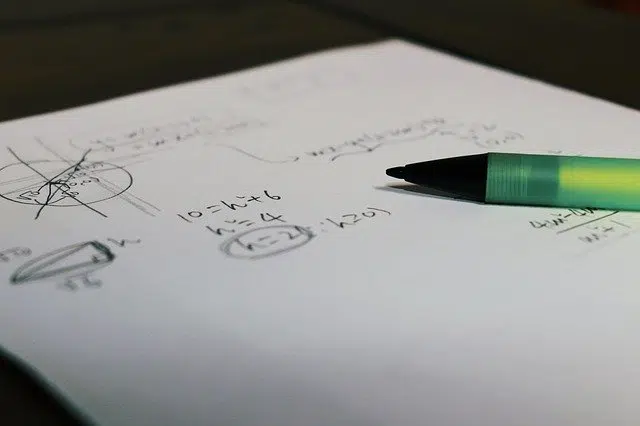
A mathematical model allows us to theoretically describe an object that exists outside the field of mathematics.
A mathematical model theoretically describes an object that exists outside the field of mathematics. Weather forecasts and economic forecasts, for example, are based on mathematical models.
Its success or failure depends on the precision with which this numerical representation is constructed, the fidelity with which natural facts and situations are concretized in the form of variables related to each other.
Phases of a mathematical model
Basically, in a mathematical model we see 3 phases:
* construction, the process in which the object is converted into mathematical language;
* the analysis or study of the prepared model;
* the interpretation of said analysis, where the results of the study are applied to the object from which it was started.
Use and usefulness
The usefulness of these models lies in the fact that they help to study how complex structures behave in situations that cannot be easily seen in the real world. There are models that work in certain cases and are imprecise in others, as is the case with Newtonian mechanics, whose reliability was questioned by Albert Einstein himself.
It can be said that mathematical models are sets with certain relations already defined , which make possible the satisfaction of propositions that derive from theoretical axioms. To do this, they use various tools, such as linear algebra, which, for example, facilitates the analysis phase, thanks to the graphic representation of the different functions.

Experts classify mathematical models in different ways.
Classification of mathematical models
According to the origin of the information on which the model is based, we can distinguish between a heuristic model , which is based on the definitions of the causes or natural mechanisms that originate the phenomenon in question, and an empirical model , focused on the study of the results of the experiment.
Likewise, with respect to the type of intended result, there are two basic classifications:
* qualitative models, que pueden valerse de gráficos y que no buscan un resultado de tipo exacto, sino que intentan detectar, por ejemplo, la trend de un sistema a incrementar o disminuir un determinado valor;
* quantitative models, que, por el contrario, necesitan dar con un número preciso, para lo cual se apoyan en fórmulas matemáticas de variada complejidad.
Another factor that divides the types of mathematical models is the randomness of the initial situation; Thus we distinguish between stochastic models, which return the probability of obtaining a certain result and not the value itself, and deterministic models, when the data and results are known, so there is no uncertainty.
According to the objective of the model, we can describe the following types:
* simulation model, que intenta adelantarse a un resultado en una determinada situación, sea que ésta se pueda medir en forma precisa o aleatoria;
* optimization model, que contempla distintos casos y conditions, alternando valores, para encontrar la configuración más satisfactoria;
* control model, a través del cual se pueden determinar los ajustes necesarios para obtener un resultado particular.
Support of consumerism
Given different cultural and educational factors , mathematics is the least attractive science for a large percentage of people , who associate it with disastrous memories of their student days. Many of them dedicate their lives to humanistic or artistic tasks, and believe they live outside of numbers and complex functions that one day will threaten school failure; But these formulas are the pillars of the system and, if they were presented in a friendly and approachable way, they would not generate that typical rejection, often justified by a lack of capacity.
Mobile phones with touch screens, pay television with hundreds of channels and virtual movie rental services, or the Internet itself, with its infinite possibilities, are today's favorite forms of entertainment on a global level. Now, if we visited the companies that manufacture the devices, or that design and develop the aforementioned services, we would find large quality control departments , which do nothing other than analyze, through mathematical models, possible interactions between users. and systems, potential failures, and that seek to improve the final product, only based on tests and their resulting numbers.
Suppose that we have a video on demand service, and that, when paying for a certain movie, we are asked if we have a discount coupon. At that time, we are also informed that, since we are in a promotion week, a bonus of X amount will be applied. All of this, if we had to do it by hand, for a particular client, would not be very complicated; With paper, pencil and a calculator, we would solve the final price. But in the case of a platform with which millions of people interact per day, it is necessary to create and rigorously test all possible combinations to avoid, for example, a coupon being used more than once, or after its expiration, among others. other potential system violations.
